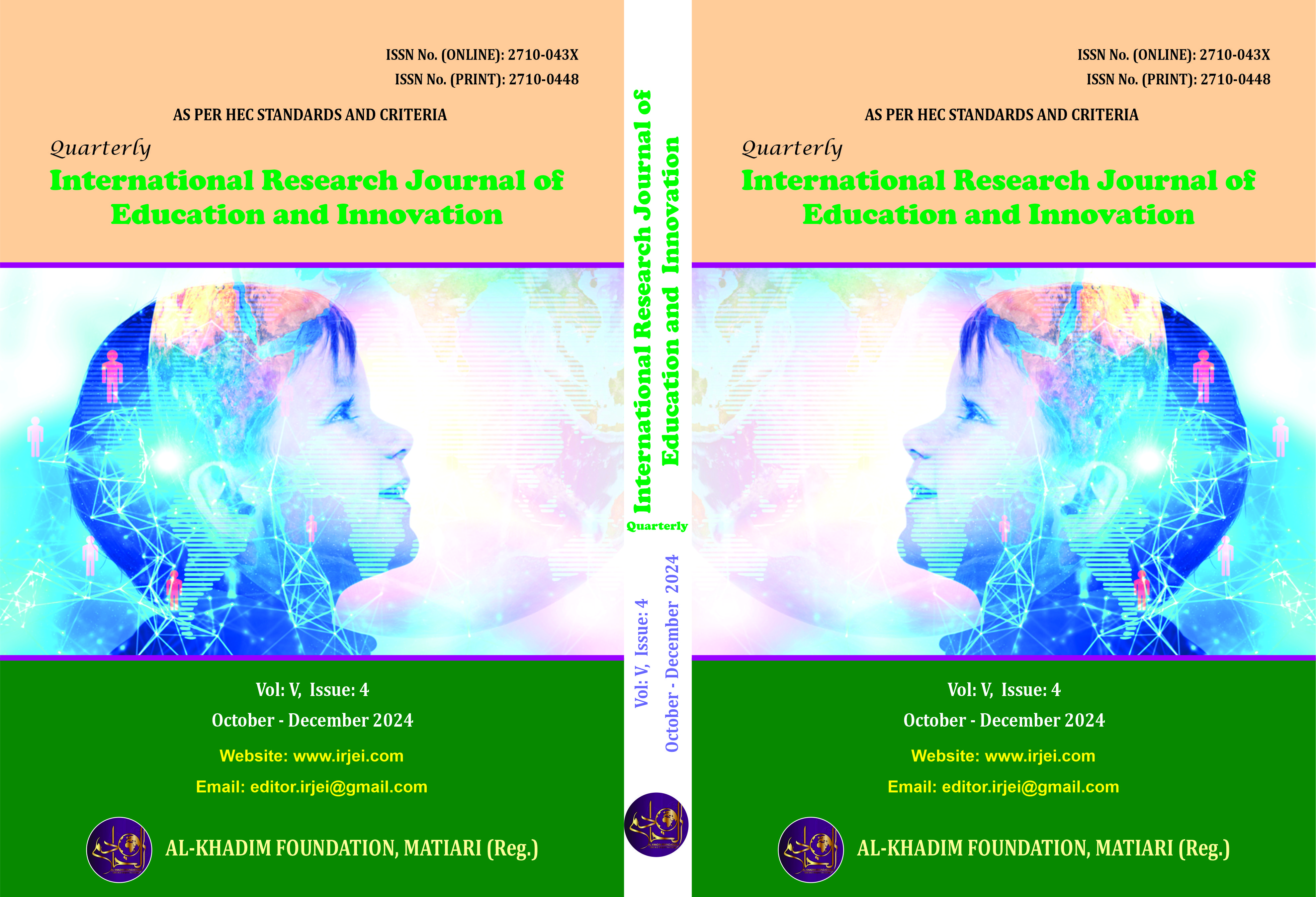Science Teachers’ Beliefs and Understanding of Stem Education at School Level
Keywords:
Beliefs, Understanding, STEM education, Science teachersAbstract
STEM Education refers to the study of science, technology, engineering, and mathematics. Teachers think STEM education is crucial for the future success of their students as it is an interdisciplinary approach to learning removes barriers in conventional instruction that divide knowledge of multiple areas and prevent students from coming up with comprehensive solutions to real-world situations. This research paper was designed to know science teachers’ beliefs and understanding of STEM education at school level. To collect data, a questionnaire was used which consisted of 44 items with six factors about teachers’ beliefs and understanding about STEM education. The sample was selected using a simple random sampling technique. 57 teachers of District Jhang responded the questionnaire. Collected data was analyzed using statistical techniques. The objectives of the study were; a) To identify science teachers' current beliefs and understanding towards STEM education. b) To learn about opportunities and obstacles associated with implementing STEM education. c) To evaluate the need for professional development in STEM teaching. d) To ascertain how STEM education will be implemented in classrooms and what effects it will have on students. e) To determine the STEM education's potential future in Pakistan. It was concluded that STEM education helps students develop 21st century skills as well as for better future and there is need of professional developments to better implement STEM education. It was concluded that STEM education is evolving over the next decade. It was concluded that there were lack of resources to implement STEM education. It is recommended that STEM-related teacher trainings should be done. Schools should be reorganized and curriculum needs to be updated to reflect the evolving needs of STEM education. Additionally, the community and school administration should assist teachers in adopting STEM education.
References
Akiri, E., Tor, H. M., &Dori, Y. J. (2021). Teaching and Assessment Methods: STEM Teachers' Perceptions and Implementation. Eurasia Journal of Mathematics, Science and Technology Education, 17(6).
Aslam, S., Saleem, A., Kennedy, T. J., Kumar, T., Parveen, K., Akram, H., & Zhang, B. (2022). Identifying the Research and Trends in STEM Education in Pakistan: A Systematic Literature Review. SAGE Open, 12(3), 21582440221118545.
Bybee, R. W. (2013). The case for STEM education: Challenges and opportunities.
Costa, M. C., Domingos, A. M. D., Teodoro, V. D., &Vinhas, É. M. R. G. (2022). Teacher professional development in STEM education: An integrated approach with real-world scenarios in Portugal. Mathematics, 10(21), 3944.
Dare, E. A., Keratithamkul, K., Hiwatig, B. M., & Li, F. (2021). Beyond content: The role of STEM disciplines, real-world problems, 21st century skills, and STEM careers within science teachers’ conceptions of integrated STEM education. Education Sciences, 11(11), 737.
Diana, N., & Sukma, Y. (2021, May). The effectiveness of implementing project-based learning (PjBL) model in STEM education: A literature review. In Journal of Physics: Conference Series (Vol. 1882, No. 1, p. 012146). IOP Publishing.
Hali, A. U., Aslam, S., Zhang, B., &Saleem, A. (2021). An overview on STEM education in Pakistan: Situation and challenges. International Transaction Journal of Engineering, Management, & Applied Sciences & Technologies, 12(1), 1-9.
Hasanah, U. (2020). The Impacts of STEM Instruction on Strengthening High School Students’ Reasoning Skills. Science Education International, 31(3), 273-282.
Hassan, M. U., Nawaz, H., &Sadiq, A. (2022).Teaching Methods as a Predictor on Promoting STEM Education: A Domain Specific Focus on National Curriculum Document 2006. Multicultural Education, 8(6).
Kelley, Todd R., and J. Geoff Knowles."A conceptual framework for integrated STEM education." International Journal of STEM education 3 (2016): 1-11.
Krejcie, R. V., & Morgan, D. W. (1970). Determining sample size for research activities. Educational and psychological measurement, 30(3), 607-610.
Land, M. H. (2013). Full STEAM ahead: The benefits of integrating the arts into STEM. Procedia Computer Science, 20, 547-552.
Madani, R. A. (2020). Teaching Challenges and Perceptions on STEM Implementation for Schools in Saudi Arabia. European Journal of STEM Education, 5(1), 3.
National Research Council, Division on Earth, Life Studies, Board on Environmental Studies, Committee on Human, & Environmental Exposure Science in the 21st Century. (2012). Exposure science in the 21st century: a vision and a strategy.
Siregar, D., Arisandi, D., Usman, A., Irwan, D., & Rahim, R. (2017, December). Research of simple multi-attribute rating technique for decision support. In Journal of Physics: Conference Series (Vol. 930, No. 1, p. 012015). IOP Publishing.
Tunc, C., &Bagceci, B. (2021).Teachers' Views of the Implementation of STEM Approach in Secondary Schools and the Effects on Students. Pedagogical Research, 6(1).
Zhao, J., Wijaya, T. T., Mailizar, M., &Habibi, A. (2022). Factors influencing student satisfaction toward STEM education: Exploratory study using structural equation modeling. Applied Sciences, 12(19), 9717.





